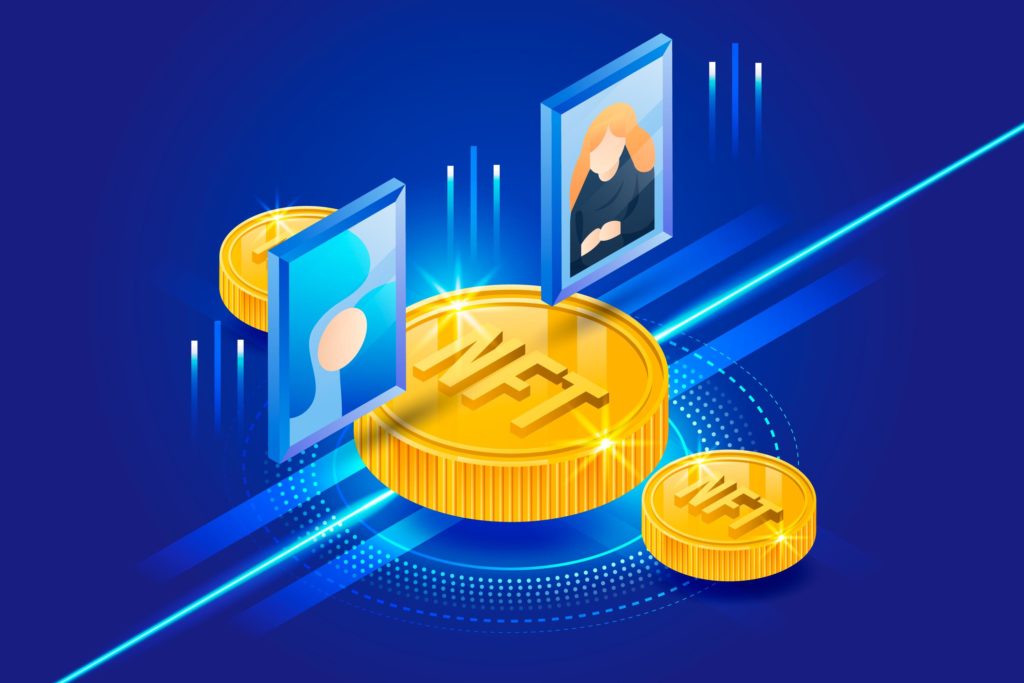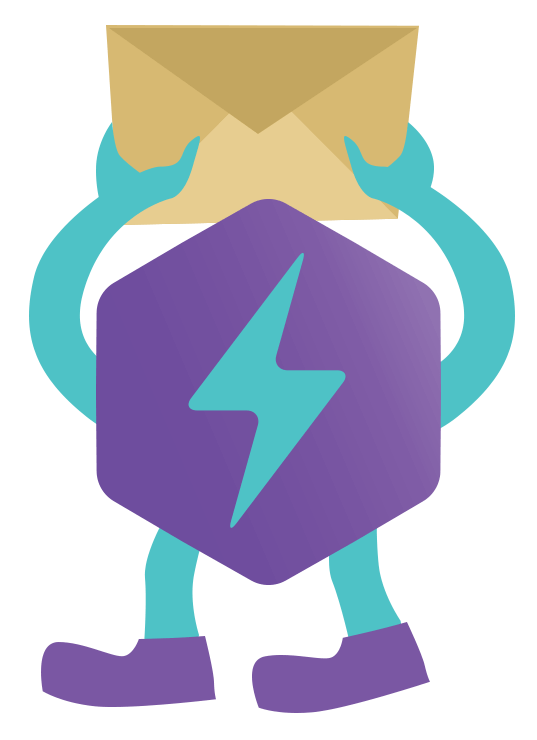This post will walk you through the entire process of creating and selling an NFT from start to finish.
This guide is for you if:
- You want to create an NFT but don’t know where to start
- You are considering selling an NFT but are unsure of the process
- You want to learn more about the technical aspects of NFTs
If you’re new to NFTs, check out our post on What is an NFT? This article will focus on the practical side of creating and selling NFTs.
We’ll cover everything you need to know, including:
- How to create an NFT
- How to market and sell an NFT
- What platforms you can use to sell your NFT
- How to price your NFT
- And more!
So without further ado, let’s get started with a quick recap.
What is an NFT?
NFT stands for “non-fungible token.” Simply put, it’s a digital asset stored on a blockchain. This means that it is unique and cannot be duplicated.
NFTs can represent just about anything, but they are commonly used for digital art, music, and other forms of collectible digital media.
Some popular examples of NFTs include:
How to Make an NFT
Now that we know what an NFT is let’s discuss how to create one. Creating an NFT is not as complicated as you might think. In fact, there are only a few steps you need to follow:
- Choose a Blockchain
- Create Your Asset
- Upload Your Asset to the Blockchain
- mint Your NFT
Let’s go into a bit more detail on each of these steps.
1. Choose a Blockchain
The first step is to choose a blockchain that supports NFTs. Currently, the three most popular choices are Ethereum, Solana, and Flow.
Ethereum is the original blockchain for NFTs and currently has the largest selection of NFT platforms and wallets. Solana is a newer blockchain that is faster and more scalable than Ethereum. Flow is another up-and-coming blockchain that is specifically designed for NFTs. Solana and flow also offer faster transactions and lower fees than Ethereum.
2. Create Your Asset
The next step is to actually create your NFT asset. This can be anything from a digital painting to an audio file. The only requirement is that it is digital and can be stored on a blockchain.
- Upload Your Asset to the blockchain
Once you have your asset, you need to upload it to the blockchain.
The process for doing this will vary depending on which blockchain you choose.
Some platforms, like Ethereum, require you to upload your asset to an online marketplace.
Other platforms, like Solana, allow you to upload your asset directly to the blockchain.
For a beginner, we recommend using a marketplace like OpenSea or Rarible.
Tips for creating valuable assets
a. Attach an actual use case
Your NFT should have an actual use case that people will actually use.
For example, Decentraland is an NFT platform that allows people to buy, sell, and trade virtual land.
This gives users a reason to actually use the platform and creates value for the NFTs.
b. Make it scarce
If your asset is too common, it will be less valuable.
Make sure to create a limited supply of your NFTs to increase their scarcity and value.
c. Make it unique
Your NFT should be one-of-a-kind and not easily replicated.
This makes it more valuable and desirable to collectors.
Next…
4. Mint Your NFT
The final step is to “mint” your NFT.
Minting is the process of creating a unique token that represents your asset on the blockchain.
This token can then be bought, sold, or traded like any other cryptocurrency.
And that’s it! These are the four simple steps to creating an NFT.
Now let’s talk about how to market and sell your NFT.
How to Market Your NFT
Once you have created your NFT, it’s time to start marketing and selling it.
The first step is to choose a platform on which to sell your NFT.
As we mentioned before, some of the most popular choices are OpenSea and Rarible.
These platforms allow you to list your NFT for sale and set your own price.
They also take a small percentage of each sale as a fee.
Another option is to create your own personal website or online store.
This can be a good choice if you want more control over the sales process.
However, it requires more work to set up and promote.
Once you have chosen a platform, it’s time to start promoting your NFT.
But listing an NFT for sale is only half the battle.
You also need to make sure people actually see it and are interested in buying it.
Here are a few ideas for promoting your NFT:
- Create a social media profile for your NFT (Facebook, Twitter, Instagram)
- Make a video about your NFT
- Write articles or blog posts about your NFT
- Participate in online forums and discussion groups
- Give talks or presentations about your NFT
The more you promote your NFT, the more likely you are to find a buyer.
Pro Tip: Build a community around your NFT even before launch. This strategy is underused first because it’s hard to do and second because it requires a lot of time. But if you can get people interested in your NFT before it even exists, you’ll have a much better chance of selling it when it does.
And that’s everything you need to know about creating and marketing an NTF!
Platforms Individuals Can Use To Sell Less Than 100 NFTs
This section will review some of the best NFT marketplaces with their pros and cons.
OpenSea
Website: https://opensea.io
One of the first and most popular NFT marketplaces. OpenSea supports all types of digital assets, including art, games, music, and more.
Pros:
- Good selection of assets
- Supports many types of NFTs
- Easy to use
Cons:
- Fees are high compared to other marketplaces
- Fees: 2.5%
Rarible
Website: https://rarible.com/
A newer marketplace that has quickly become popular with creators and collectors. Rarible supports art, games, and more.
Pros:
- Lower fees than OpenSea
- Easy to use
Cons:
- Selection of assets is smaller than OpenSea
Fees: 2.5% from buyer and seller
Foundation
Website: https://foundation.app/
A marketplace for digital art that launched in March 2021. Foundation supports art, music, and more.
Pros:
- Lower fees than OpenSea
- Good selection of assets
Cons:
- Only supports art and music at the moment
Fees: 5% per sale
SuperRare
Website: https://superrare.com/
This marketplace is built on Ethereum and focuses exclusively on digital art. SuperRare supports art, music, and more.
Pros:
- Good selection of art
- Easy to use
Cons:
- Fees are high compared to other marketplaces
Fees: 3%
Nifty Gateway
Website: https://niftygateway.com/
Also built on Ethereum, Nifty Gateway is a marketplace that allows you to buy, sell, and trade digital art and other assets directly from a Metamask wallet.
Pros:
- Easy to use
- Low fees
Cons:
- Small selection of assets
Fees: 15% per sale
Binance NFT
Website: https://www.binance.com/en/nft/home
One of the newest marketplaces, Binance NFT, supports art, games, and more. This is a special section of the Binance website; you need a Binance account to use it.
Pros:
- Good selection of assets
- Low fees
Cons:
- You need a Binance account to use it
Fees: Free
As you can see, there are many different options for selling your NFT. The best marketplace for you will depend on the type of asset you’re selling and your personal preferences.
Tip: As a new creator, we suggest starting with OpenSea or Rarible. These marketplaces have the most extensive selection of assets and are easy to use.
Now you have an NFT, a market, and a platform, what’s next? Pricing.
How to price your NFT
Pricing your NFT can be tricky. On the one hand, you want to price it high enough to make a profit, but on the other hand, you don’t want to price it so high that no one will buy it.
Here are a few factors to consider when pricing your NFT:
- The time and effort you put into creating the NFT
- The uniqueness of the NFT
- The size of your audience/community
- The demand for the type of NFT you’re selling
- The price of similar NFTs
Keep in mind that you can always change the price of your NFT later if it’s not selling.
Tips for pricing your NFT
- Start with a lower price and increase it if needed
- Use OpenSea’s “Recommended Price” tool to get an idea of how much similar NFTs are selling for
Now that you know how to price your NFT, it’s time to start selling!
Selling your NFT
Once you’ve chosen a marketplace and priced your NFT, it’s time to start selling.
Here are a few tips to help you sell your NFT:
- Use social media to promote your NFT
- Create a video or blog post about your NFT
- Collaborate with other creators in your community
- Make sure your NFT is listed on as many marketplaces as possible
With a little effort, you should be able to sell your NFT in no time! And that’s it! You now know everything you need to create and sell your own NFT.
We hope this guide was helpful. If you have any questions, reach out to us on our social media.










